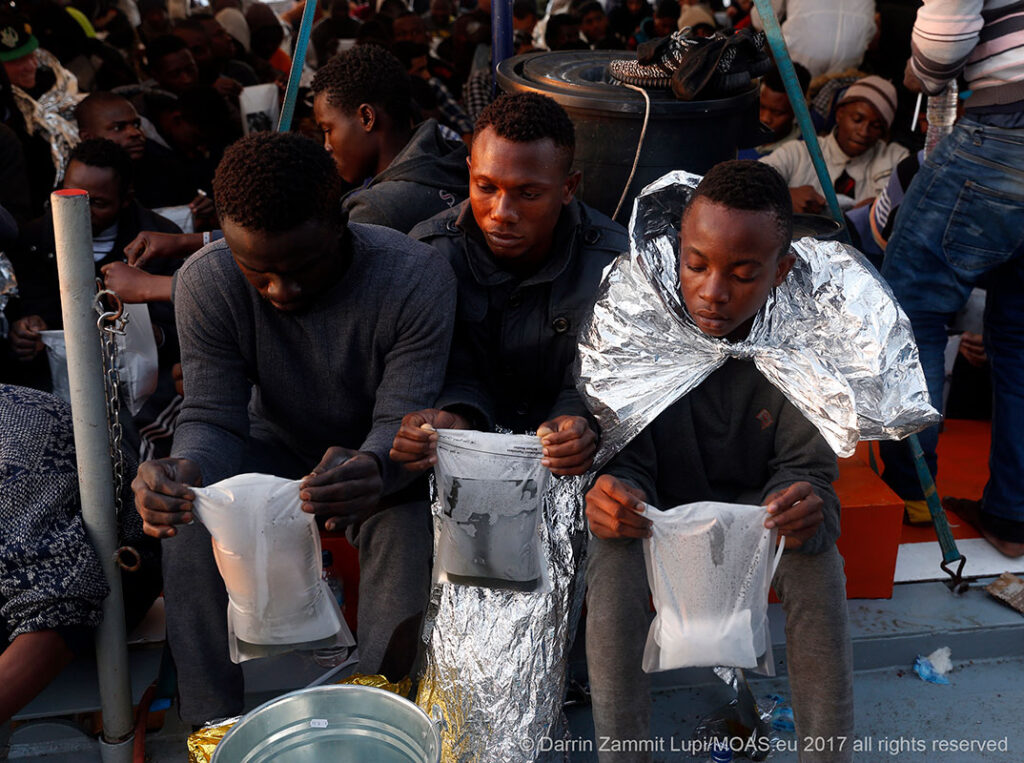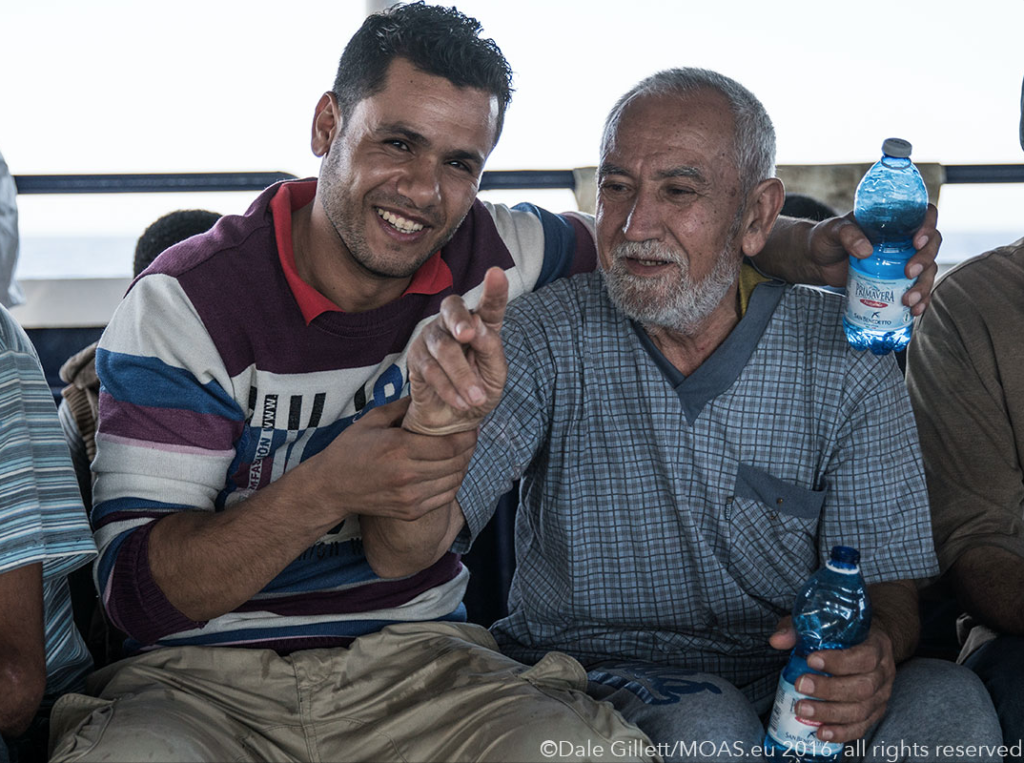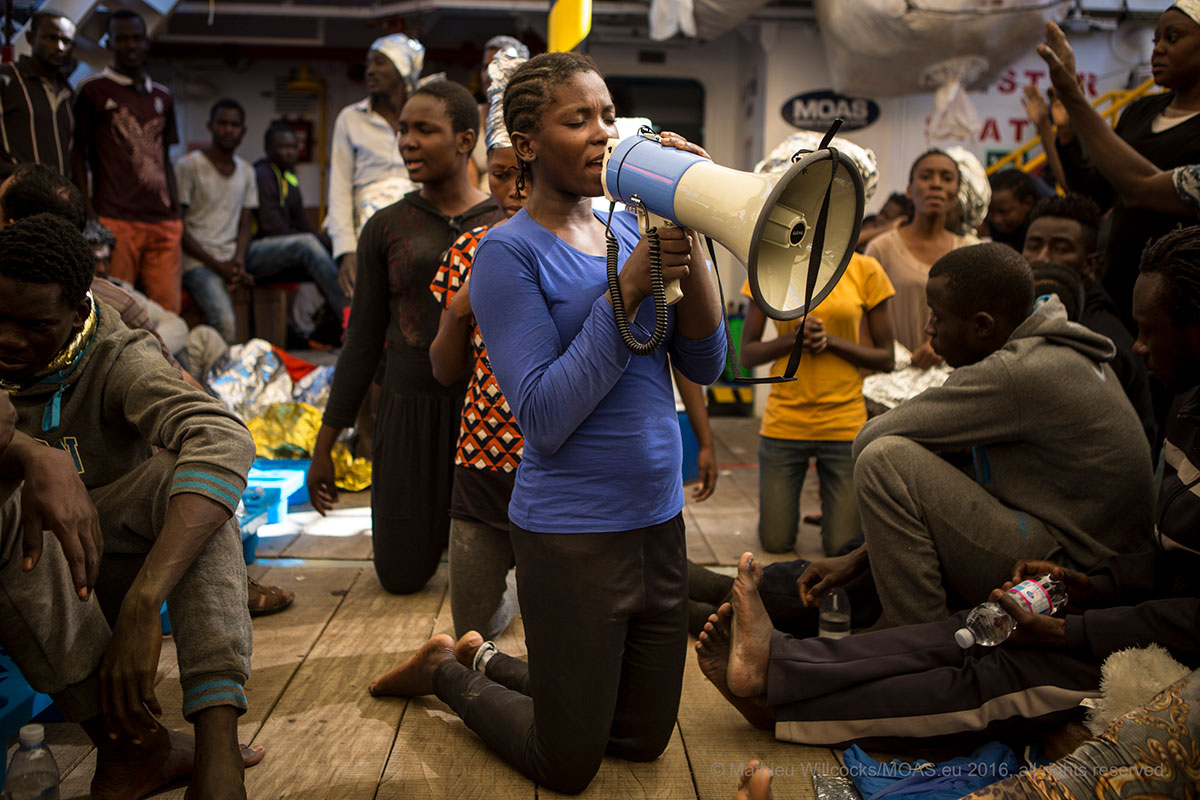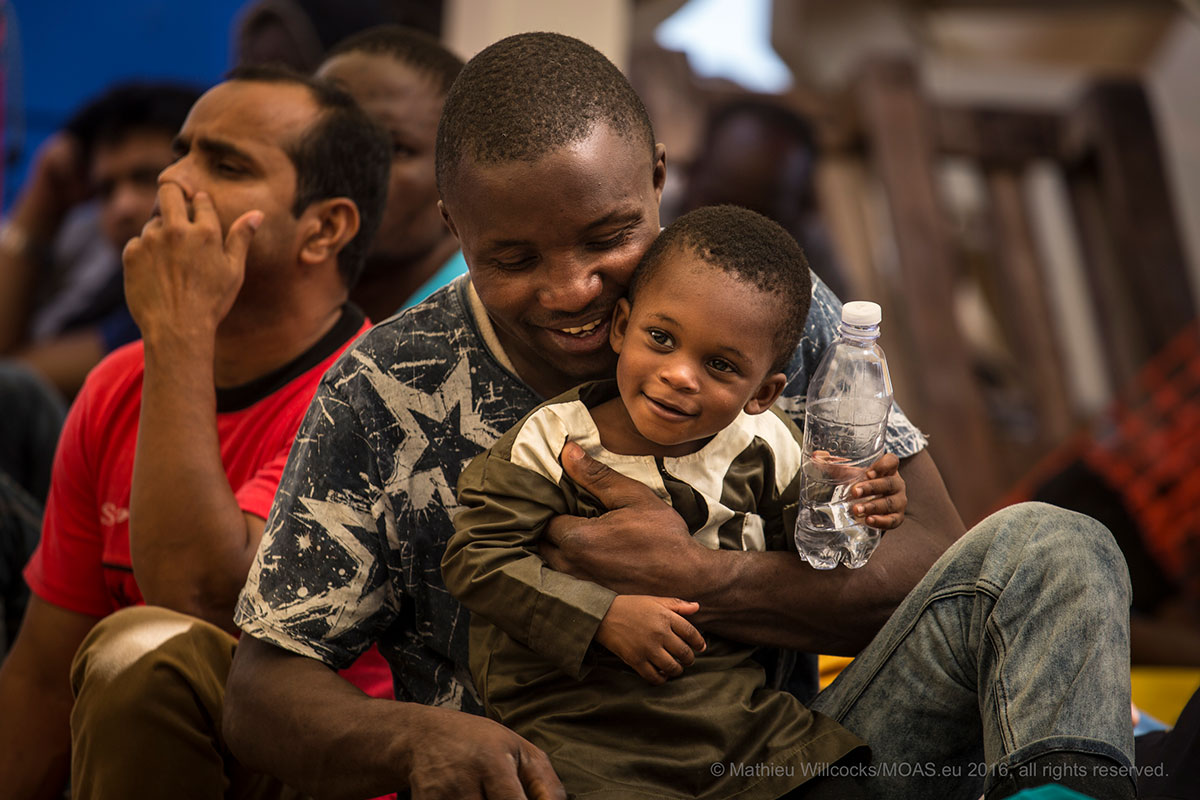Last week, our crew members shared their insights into the rescue phase of a SAR operation, as part of our ‘SAR Mission Up-Close’ series. This week, we explain what happens next: delivering post-rescue care to the people on board.
“Post-rescue care includes everything from the first moment people arrive on the ship” (Davide de Bernadin, MOAS Logistics Coordinator)
The initial care
As the MOAS crews first bring people on board the Phoenix, each person is given a short medical assessment to check their temperature, and check for urgent medical issues: “Sometimes there are people with stab wounds, with gun shots, with fractures” (Marco Cauchi, Operations Director). The crew will also check everyone for prohibited items, but after such dangerous and often very long journeys, the people we rescue tend to have very few belongings left.
“Even though I see that they’re OK now on board, the kids, I can still see them on those boats and I can’t understand it, because it’s not their place there. They have to be in a safe place – kids are something important, they’re the most important thing in life. It’s not their place there, risking their lives.” (Dominic “Mimmo” Vella, SAR Crew Member)
Once we have distributed food, water and blankets, our medical team will closely examine the most severe cases. Over the course of our missions, our teams have encountered many challenging cases, including trauma wounds, fuel burns, severe dehydration, and even paralysis. Our crews have also assisted many heavily pregnant women, who are often in need of urgent prenatal care. We have also rescued women travelling with their new-born babies; the youngest baby we have had on board was only two days old.
Up on deck
The time the people we rescue spend on the Phoenix can vary from 12 to 72 hours, depending on which port the Maritime Rescue Coordination Centre (MRCC) in Rome instructs us to head to. After everyone on board has received initial care, almost everyone falls fast asleep: being on board the Phoenix is the first time in often weeks or months that they have had the opportunity to sleep in safety.
How people then pass their time on board varies: “Sometimes you have quiet people who just relax […], sometimes they have very high morale, they sing together” (Davide De Bernardin, MOAS Logistics Coordinator). Many of our crew members will tell you that both the toughest and best part of the post-rescue care is dealing with children on board. While it is hard to see children having been in such dangerous situations, the time the crew spends with them sheds a different light on the SAR operations: “From these kind of people, especially from children, you learn a lot […]” (Dominic “Mimmo” Vella, SAR Crew Member).
Throughout the journey to the port of disembarkation, our crew will take it in turns to distribute food and talk to and watch over the people on board to make sure that they are as comfortable as they can be for the duration of their time with us.
Next week we will explore what happens once the crews finally reach the assigned port of disembarkation.
Please sign up to our newsletter at the bottom of this page for all the MOAS news and updates and support our rescue missions by giving whatever you can to help us save lives at sea.
This project has been funded with support from the European Commission. This publication reflects the views only of the author, and the Commission cannot be held responsible for any use which may be made of the information contained










